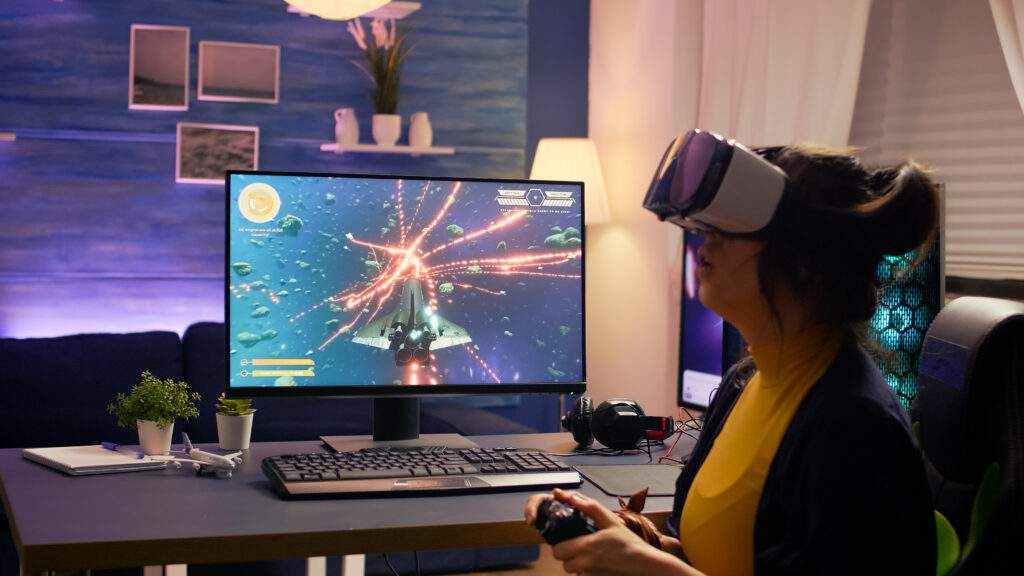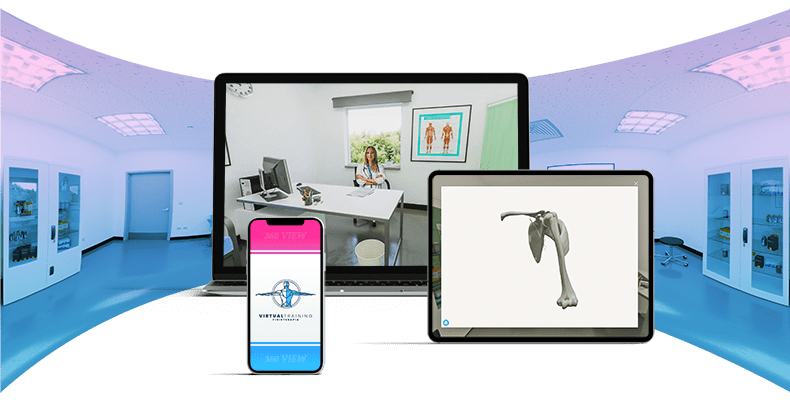In the last few years, Virtual Reality (VR) and Augmented Reality (AR) revolutionised the gaming world and grabbed the attention of an increasing number of gamers due to the high potential these technologies offer for an enhanced gaming experience.
Gaming today is also becoming an increasingly immersive and spectacular experience to meet the needs and expectations of gamers who are increasingly demanding and looking for experiences that allow them to explore real virtual universes.
For several years now, mobile gaming has become the most significant portion of the gaming market, and experts themselves estimate that it will grow steadily in the coming years.
Due to the success of augmented reality on mobile devices, there has been an increase in gaming on users’ mobile devices. A survey published by Newzoo, showed that in 2018, some 53% of Americans played augmented reality games from mobile apps compared to 28% who used their mobile phones for virtual reality games.
This article will discuss precisely how these two technologies can be applied to the gaming industry.
AUGMENTED REALITY IN GAMING
Augmented reality (AR) allows gaming and fantasy elements to be inserted into the real world by exploiting the player’s environment. Thus, virtual elements blend with the user’s physical environment, blurring the line between the real and digital worlds for a more immersive experience that is not affected by the technical limitations of devices, as is the case with VR games.
With the launch of Pokemon Go in 2016 and a number of other mobile games using augmented reality, we are seeing this technology become more mainstream than ever before. Pokémon Go used AR so that players could see the game’s creatures appear in real locations. Players could also use their phones’ cameras as portals to enter virtual worlds where they could collect Pokémon and other items.
AR systems process visual data provided by the camera to project digital animations into the world that has been mapped by the mobile device and allow the user to explore the world in real time via their device’s screen.
VIRTUAL REALITY IN THE GAMING INDUSTRY
The gaming industry has been using this technology for decades, but only recently has its potential been seen. According to a recent survey, global VR revenue in the gaming industry is estimated to have risen to $4.3 billion in 2015. However, the new era of VR technology began with the first prototypes of Oculus VR and Samsung Gear VR.

With VR, by wearing visors, gamers can fully immerse themselves in the game world and interact with it in completely new ways that were unthinkable until a few years ago. This allows for a more realistic and immersive experience.
DIFFERENCES BETWEEN AR AND VR IN GAMING
Although these are similar technologies that can often be confused with each other, virtual reality and augmented reality are completely different.
What they have in common is that they both allow people to experience things they might not otherwise do.
The most important thing to understand is that VR replaces or completely hides the real world with a highly realistic artificial environment, while AR enhances the actual reality by adding a computer-generated image.
- Augmented Reality imitates artificial things in a real environment, while VR creates an artificial virtual environment to explore. In Augmented Reality, 3D graphics are used to superimpose computer-generated images on the user’s view of the real world, this is done using sensors and algorithms that determine the orientation of a camera.
- Virtual Reality replaces or completely hides the real world with a highly realistic artificial environment. VR technology, instead of using device cameras within the physical environment, uses the user’s eyes to locate themselves within the imitated environment. This clearly means that if the user turns their head, the graphics respond accordingly, allowing the person to interact with the virtual world.
HOW AR AND VR WILL IMPACT THE GAMING INDUSTRY
Let us now discover how Augmented and Virtual Reality technologies will transform the gaming industry with their revolutionary actions and numerous benefits.
- Immersive experience: through these technologies users do not distinguish between the real and virtual environment, which is a key feature for the success of any game nowadays.
- The importance of 3D: in the gaming industry, 3D effects offer the player an immersive experience and are the backbone of the game.
- Real-time interaction: the ability to merge digital and real-time information into a single solution will prove to be a game changer for game producers, enabling improved player perception and the creation of more immersive levels.
- Creative content: AR and VR are not only distinguished by their ultimate experience, but also by their versatile, immersive, personalised and superior content to best suit the target market.
- Changing lifestyles: AR and VR technologies have also evolved and developed in other sectors such as medicine, tourism, education and entertainment.
CONCLUSION
The level of engagement offered by virtual reality viewers may be higher than that offered by AR technology. The impression of being surrounded by a virtual world is something that augmented reality cannot offer and, from this point of view, VR would seem to be more suitable for gaming.
However, VR and AR remain two solutions that should not be placed in competition with each other.
Users are faced with the innovations of both technologies, without necessarily having to choose between one and the other, as augmented reality and virtual reality games offer realistic, yet different gaming experiences.
At AR Market, we strongly believe in the potential of AR and VR technologies applied in different business sectors, including gaming.
To get an overview of what we do and can achieve, visit our website and contact us!





